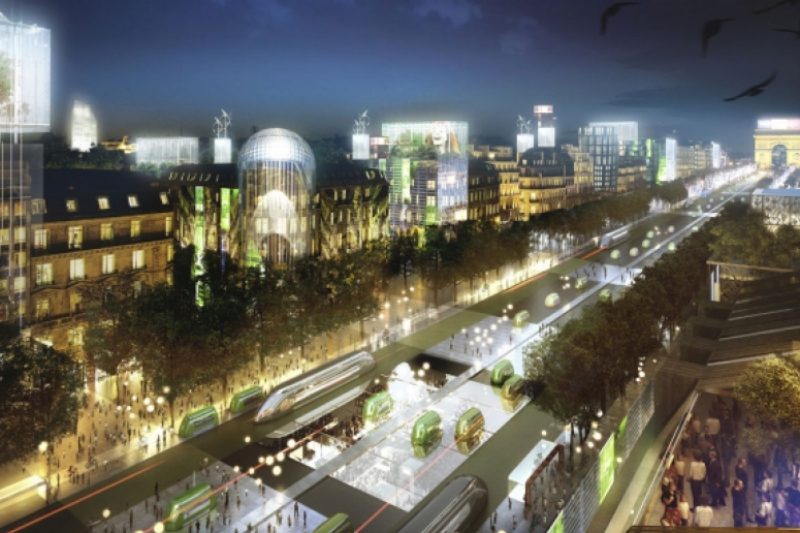From constructing a “connected forest” to re-engineering links with adjacent streets and removing the label of “absolute luxury”, the famous Avenue des Champs-Élysées could be destined for some major real-estate alterations
It’s the world’s third most expensive street (after 5th Avenue in New York and Causeway Bay in Hong Kong) but it’s now 20 years since the Grand Lady of Parisian boulevards had her last makeover and she has, it seems, begun to let herself go just a little bit – to let her standards slip. She was recently described as “vulgar, without style, expensive and tacky” by the BBC’s Paris correspondent.
There’s nothing like the sting of indignation from British insults to spark French authorities into life. In any case, it’s not just the foreign media that have noticed the slide and many Parisians have begun to drop the Champs-Élysées from their Sunday afternoon stroll itinerary.The Champs-Élysées Committee (Comité des Champs-Élysées) met to discuss this very subject earlier this week, with the objective of re-imagining the famous boulevard’s future between now and 2025; to at least make the great street worth its place in the global property ladder and to perhaps have la plus belle avenue du monde remain the source for the countless songs and poems written about it since it became a symbol of Parisian grandeur and elegance during the era of the Second Empire in the late 19th century.
“We want to re-invent a future that is reflective of its illustrious past,” said Jean-Noël Reinhardt, president of the Committee that brings together the various brands and businesses on the 1.9km-long street. At Paris Town Hall, Jean-Louis Missika – deputy in charge of urban planning – has spearheaded the setting up of a group that will begin its work next January, according to a report in Le Parisien.

The future is greener: Easter Weekend in 2010, when the Champs- Élysées really transformed into a “champs”
“More architecture, art, culture, events and convivial services. The Champs-Élysées must not be the symbol of absolute luxury. Visitors also come to stroll, to have fun and meet friends in the restaurants,” emphasized Philippe Houzé to Le Parisien. Houzé is the president of board of the famous Galeries Lafayette group, who are going to open a new department store at Number 52 in the site left vacant after the demise of the Virgin Megastore. As far as he’s concerned, visitors need to feel at ease and share unique moments on the Champs-Élysées, as well as great events, such as the Bicentenary of 1989.
Another idea that looks like taking hold is that of partial pedestrianisation of the avenue – one Sunday per month, for example, or at periods during the summer.

Connected Forest: Viguier suggests planting hundreds of trees between the roundabout and Place de la Concorde to create “a veritable forest, with full WiFi coverage, leaving glades”, dotted with”ephemeral pieces of micro-architecture”
Viguier would also like to re-open links between the avenue and all of its adjacent streets – streets that are currently in the shadow of the Champs-Élysées’ glory, as he sees it. His objective is to recreate something of a life that resembles a quarter or a community. Another possibility of his is to create a connected forest where free internet access would be available at the lower end (Place de la Concorde end) of the avenue, where temporary exhibitions would be welcomed, as well as various other cultural events.
Finally, this re-vamping would be carried out on four axes to be developed and managed, according to the architect: fluxes, verticality (see main pic), breath and… the connected forest.





 Tootlafrance is Ireland’s fresh new eyes on France, bringing you the latest news, exclusive celebrity interviews, political analysis, cultural events, property news and, of course, travel features written by top Irish journalists.
Tootlafrance is Ireland’s fresh new eyes on France, bringing you the latest news, exclusive celebrity interviews, political analysis, cultural events, property news and, of course, travel features written by top Irish journalists.